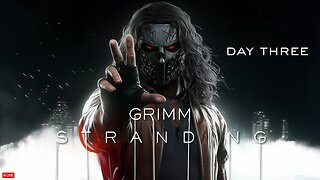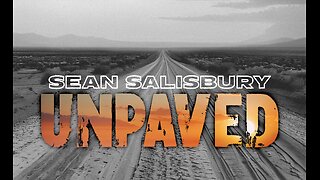Premium Only Content

FREE FULL COURSE WordPress Full Site Editing with Gutenberg
DOWNLOAD FREE FULL COURSE
https://bit.ly/38gyECp
Create your theme, as well as your articles and pages, using Gutenberg, the Full Site Editor.
What you’ll learn
WordPress Full Site Editing with Gutenberg
Gutenberg is a block editor that may be used to create content for posts and pages.
An overview of Gutenberg Full Site Editing and how it may help you become a better web designer.
How to build a basic theme from the ground up that is compatible with the Full Site Editor.
See how WordPress uses templates to customize the layout of various elements of your website.
Learn which templates manage each of your site’s web pages, as well as how to alter or build templates to make them appear the way you want.
As a starting point for your own site, we’ll take a detailed look at the Twenty Twenty Two theme.
Requirements
Working or basic WordPress knowledge is required.
It will help if you have a PC with Windows, Mac, or Linux. You’ll also need a web hosting service and a domain name.
Description
WordPress 5.0 included Gutenberg as a standard feature. Gutenberg was the name given to the new block editor that took the place of the classic WYSIWYG editor that had been in use from the beginning of WordPress.
When it comes to creating content for your WordPress posts and pages, Gutenberg is the editor of choice. Header blocks, picture blocks, and text blocks are all available. And there are blocks for just about everything else you may want to put on a website. Drag and drop blocks onto and around the editor to create your posts and pages. WordPress themes control other parts of your site, such as the header and footer areas, as you write the content for your web pages. This is how your theme works.
But, with WordPress 5.9, Gutenberg received its most significant enhancement yet: full site editing! FSE is a common abbreviation, but what does it mean?
You may now update and create the headers and footers for your website using the same block editor (Gutenberg) that you’ve been using for your text. So you design the top of the page, the bottom of the page, and the center of the page. As a result, you now have complete control over the appearance of your website. That’s what Full Site Editing entails.
This course is intended to rapidly bring you up to speed with WordPress Full Site Editing.
This course includes the following topics:
primer on Gutenberg and the fundamentals of full-site editing.
A look at the Gutenberg editor in detail, including a look at some of the most essential blocks.
Follow along as we develop a simple theme that is compatible with full site editing.
We’ll make all of the necessary templates and template pieces for the theme to work.
This section of the course is designed to emphasize the concept that web pages are controlled by templates and to demonstrate which templates govern which aspects of your site. You’ll reinforce the fundamental ideas of Full Site Editing by following along and designing this theme for yourself, and you’ll know which templates you need to add or edit to modify the appearance of the posts, pages, archives pages, search pages, 404 pages, and so on.
We’ll take a look at WordPress 5.9’s default FSE-enabled template.
It’s called Twenty Twenty Two, and it comes with a variety of templates.
With the information you’ve received so far in the course, you’ll feel comfortable beginning with this theme (or any other FSE-enabled theme) and altering it to make your site appear exactly as you want it to.
We’ll look at making custom templates for certain articles, pages, or areas of your site, as well as making a basic landing page template.
By the conclusion of the course, you’ll be confident enough to handle the design of your own website, including the header, footer, and content, using Gutenberg. You’ll be well on your way to becoming an expert in full site editing.
Who this course is for:
WordPress users who wish to learn how to utilize Gutenberg’s Full Site Editing feature.
Who is interested in learning how to develop websites using WordPress.
-
 DVR
DVR
StoneMountain64
4 hours agoDON'T LET ME FALL FROM THE PEAK
37.5K -
 LIVE
LIVE
FusedAegisTV
1 hour agoGears 1 Reloaded Beta Wkn 2 w/R4ger, FoeDubb, Midnight - Variety Stream!
68 watching -
 LIVE
LIVE
GrimmHollywood
6 hours ago🔴LIVE • GRIMM HOLLYWOOD • GRIMM STRANDING DAY 3 • STREAM DOESN'T END TIL I BEAT DEATH STRANDING
77 watching -
 2:04:52
2:04:52
Pop Culture Crisis
3 hours agoJojo Siwa SCARED STRAIGHT? Bad News For 'SUPERMAN', Sami & Lola Sheen Feud Over OF | Ep. 861
26.8K4 -
 1:20:18
1:20:18
vivafrei
3 hours agoSincere Disagreement or Inorganic Division? OUTRAGEOUS Grace Schara Verdict! AND MORE!
164K26 -
![A 500 Followers Celebration!!! [Deadzone Rouge]](https://1a-1791.com/video/fww1/26/s8/1/R/k/h/V/RkhVy.0kob-small-A-500-Followers-Celebration.jpg) LIVE
LIVE
JTtheSG
2 hours agoA 500 Followers Celebration!!! [Deadzone Rouge]
27 watching -
 2:23:50
2:23:50
MissesMaam
6 hours agoVR QUEEN :: Kickin Block Booty 💚✨
13.4K2 -
 1:51:44
1:51:44
The Quartering
5 hours agoHow I Destroyed My Channel, Iran Rejects US Talks, Minnesota Assassin Wife Set Free & PLAYING GAMES
215K87 -
 1:18:41
1:18:41
Sean Unpaved
5 hours agoFinals Frenzy, Manning Mania, & Fastball Feuds
51.6K1 -
 17:22
17:22
IsaacButterfield
12 hours ago $0.63 earnedInsane Trans TikToker Lilly Tino Is Being Sued!
13.8K12